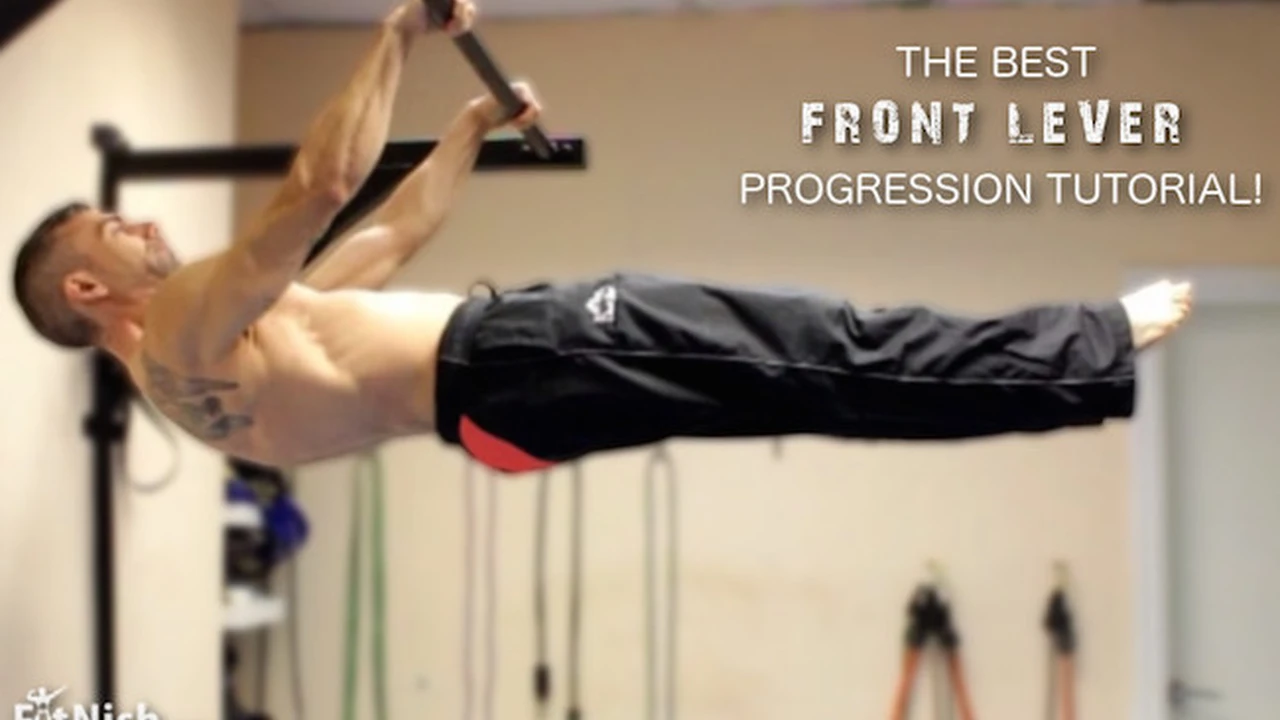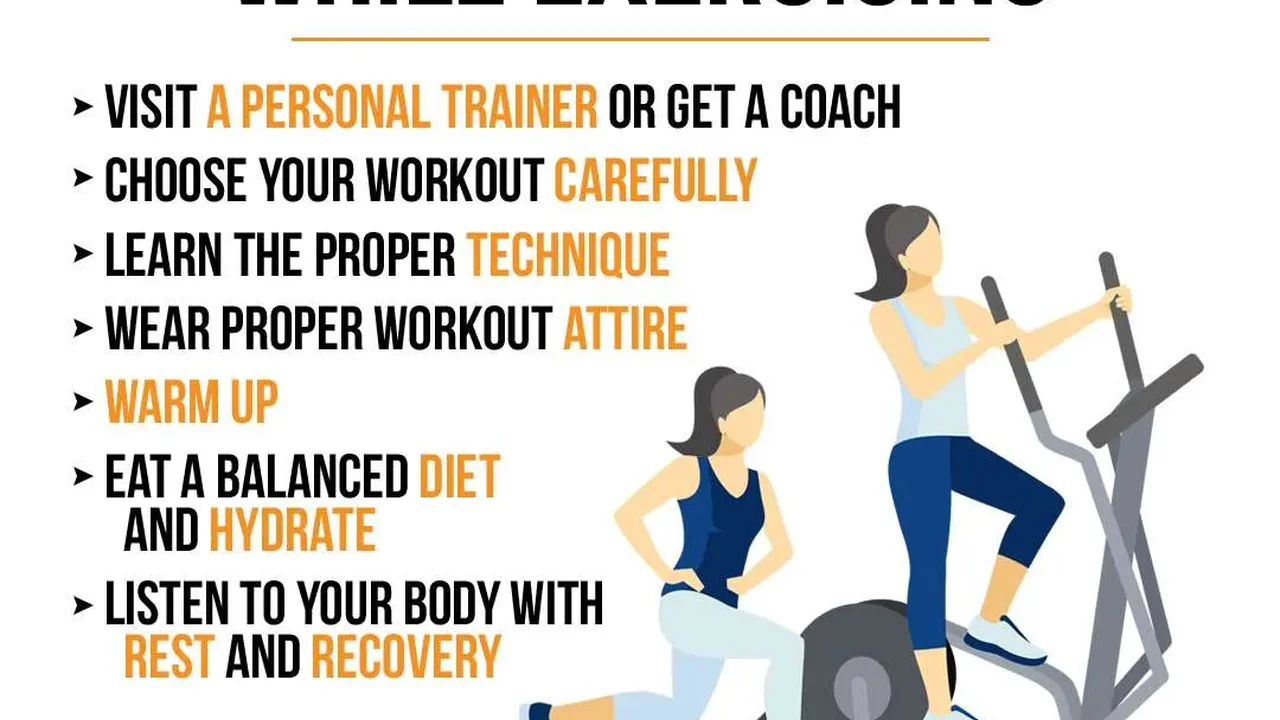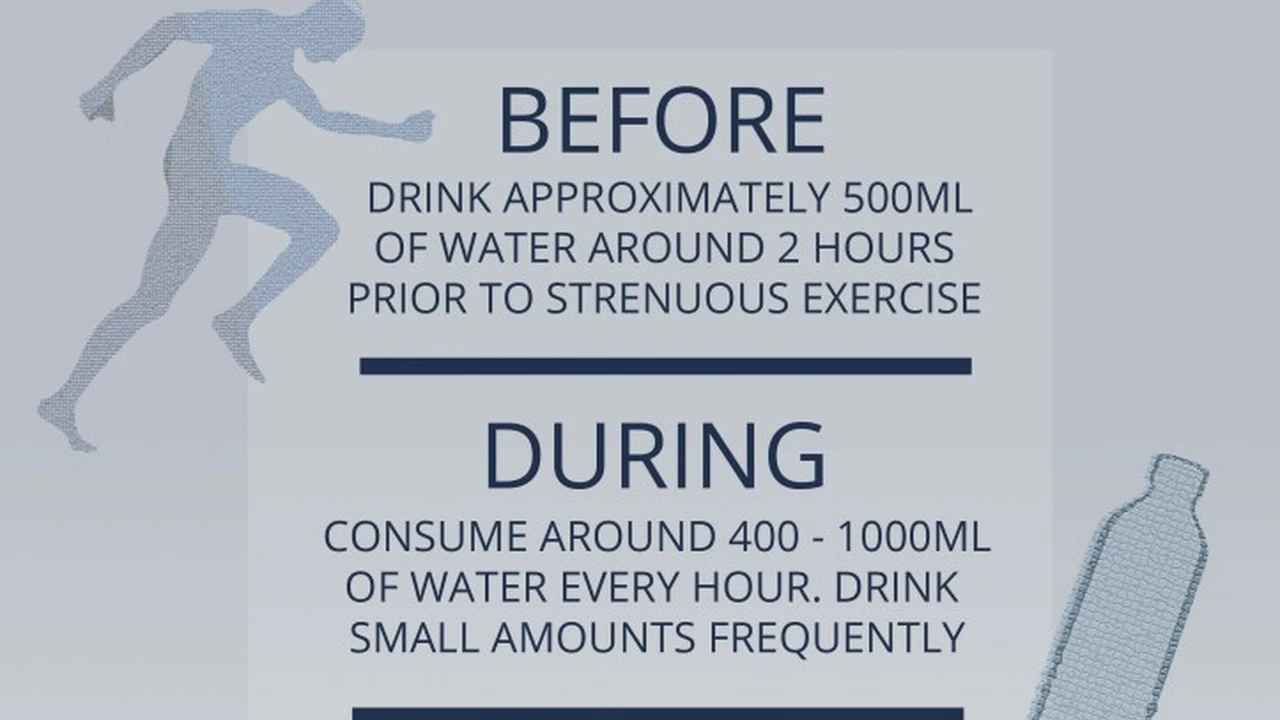Beginner Street Workout Program_ 4-Week Plan

Introduction to Street Workout and its Benefits
Street workout, also known as calisthenics, is a form of exercise that uses bodyweight movements to build strength, endurance, and flexibility. It's accessible to everyone, requiring minimal equipment and can be done virtually anywhere. The beauty of street workout lies in its adaptability; you can modify exercises to suit your fitness level, making it perfect for beginners and seasoned athletes alike. But what exactly are the benefits?
Firstly, street workout is a fantastic way to build functional strength. Unlike traditional weightlifting, which often isolates specific muscle groups, calisthenics engages multiple muscles simultaneously, improving your overall coordination and body awareness. This translates to better performance in everyday activities, from lifting groceries to climbing stairs.
Secondly, street workout enhances cardiovascular health. Many calisthenics exercises involve dynamic movements that elevate your heart rate, improving your cardiovascular endurance over time. This can lead to a reduced risk of heart disease, stroke, and other cardiovascular ailments.
Thirdly, street workout is incredibly versatile. You can perform exercises using just your bodyweight, or you can incorporate simple equipment like pull-up bars, parallel bars, and benches. This allows you to continuously challenge yourself and prevent plateaus in your training.
Finally, street workout is a great way to improve your mental well-being. The feeling of accomplishment after mastering a new exercise, coupled with the endorphin release from physical activity, can boost your mood and reduce stress. Plus, the community aspect of street workout, often involving group training sessions and supportive environments, can foster a sense of belonging and camaraderie.
Understanding the Importance of a Structured Workout Plan for Beginners
While the freedom and accessibility of street workout are appealing, beginners often make the mistake of jumping into advanced exercises without a proper foundation. This can lead to injuries, frustration, and ultimately, discouragement. That's where a structured workout plan comes in. A well-designed plan provides a roadmap for your fitness journey, ensuring that you progress safely and effectively.
A structured plan helps you establish a baseline fitness level. By starting with simple exercises and gradually increasing the difficulty, you can build a solid foundation of strength and endurance. This reduces the risk of injury and prepares you for more challenging movements.
A structured plan also promotes consistency. When you have a clear set of exercises and a schedule to follow, you're more likely to stick with your training program. This consistency is crucial for achieving long-term results.
Furthermore, a structured plan allows you to track your progress. By monitoring your performance and making adjustments as needed, you can ensure that you're continuously improving. This can be incredibly motivating and help you stay focused on your goals.
Finally, a structured plan can help you avoid overtraining. By incorporating rest days and varying your workouts, you can prevent burnout and allow your body to recover properly. This is essential for preventing injuries and maximizing your results.
The 4 Week Beginner Street Workout Program Overview
This 4-week program is designed to introduce you to the fundamentals of street workout and build a solid foundation of strength and endurance. It focuses on bodyweight exercises that target all major muscle groups and can be performed virtually anywhere. The program is divided into three workouts per week, with rest days in between to allow your body to recover.
Each workout consists of a warm-up, followed by a series of exercises, and a cool-down. The exercises are designed to be challenging but achievable for beginners. As you progress through the program, you'll gradually increase the number of repetitions and sets to continue challenging yourself.
Before starting the program, it's important to consult with your doctor or a qualified healthcare professional to ensure that you're healthy enough to participate in physical activity. It's also important to listen to your body and stop if you experience any pain or discomfort.
Week 1 Building Your Foundation
This week focuses on mastering the basic movements and building a solid foundation of strength and endurance. The exercises are designed to be relatively easy, but it's important to focus on proper form and technique.
Workout A:
- Warm-up: 5 minutes of light cardio and dynamic stretching
- Push-ups: 3 sets of 8-12 repetitions
- Squats: 3 sets of 12-15 repetitions
- Inverted Rows (using a table or low bar): 3 sets of 8-12 repetitions
- Plank: 3 sets of 30-60 seconds
- Cool-down: 5 minutes of static stretching
Workout B:
- Warm-up: 5 minutes of light cardio and dynamic stretching
- Dips (using a bench or chair): 3 sets of 8-12 repetitions
- Lunges: 3 sets of 10-12 repetitions per leg
- Australian Pull-ups (using a low bar): 3 sets of 8-12 repetitions
- Crunches: 3 sets of 15-20 repetitions
- Cool-down: 5 minutes of static stretching
Workout C:
- Warm-up: 5 minutes of light cardio and dynamic stretching
- Push-ups (on knees if needed): 3 sets of 8-12 repetitions
- Glute Bridges: 3 sets of 15-20 repetitions
- Superman: 3 sets of 12-15 repetitions
- Side Plank: 3 sets of 30-60 seconds per side
- Cool-down: 5 minutes of static stretching
Week 2 Increasing the Intensity
This week builds upon the foundation established in Week 1 by increasing the intensity of the exercises. This can be done by increasing the number of repetitions, sets, or by making the exercises more challenging.
Workout A:
- Warm-up: 5 minutes of light cardio and dynamic stretching
- Push-ups: 3 sets of 10-15 repetitions
- Squats: 3 sets of 15-20 repetitions
- Inverted Rows (using a table or low bar): 3 sets of 10-15 repetitions
- Plank: 3 sets of 45-75 seconds
- Cool-down: 5 minutes of static stretching
Workout B:
- Warm-up: 5 minutes of light cardio and dynamic stretching
- Dips (using a bench or chair): 3 sets of 10-15 repetitions
- Lunges: 3 sets of 12-15 repetitions per leg
- Australian Pull-ups (using a low bar): 3 sets of 10-15 repetitions
- Crunches: 3 sets of 20-25 repetitions
- Cool-down: 5 minutes of static stretching
Workout C:
- Warm-up: 5 minutes of light cardio and dynamic stretching
- Push-ups (on knees if needed, or try a decline push-up): 3 sets of 10-15 repetitions
- Glute Bridges: 3 sets of 20-25 repetitions
- Superman: 3 sets of 15-20 repetitions
- Side Plank: 3 sets of 45-75 seconds per side
- Cool-down: 5 minutes of static stretching
Week 3 Adding Advanced Variations
This week introduces some more advanced variations of the exercises to further challenge your strength and endurance. If any exercise feels too difficult, you can always revert back to the easier version.
Workout A:
- Warm-up: 5 minutes of light cardio and dynamic stretching
- Push-ups: 4 sets of 8-12 repetitions
- Squats: 4 sets of 12-15 repetitions
- Inverted Rows (using a lower bar, if possible): 4 sets of 8-12 repetitions
- Plank: 4 sets of 30-60 seconds
- Cool-down: 5 minutes of static stretching
Workout B:
- Warm-up: 5 minutes of light cardio and dynamic stretching
- Dips (using a bench or chair, focus on controlled movements): 4 sets of 8-12 repetitions
- Walking Lunges: 4 sets of 10-12 repetitions per leg
- Australian Pull-ups (using a lower bar, if possible): 4 sets of 8-12 repetitions
- Leg Raises: 4 sets of 15-20 repetitions
- Cool-down: 5 minutes of static stretching
Workout C:
- Warm-up: 5 minutes of light cardio and dynamic stretching
- Push-ups (decline push-ups or diamond push-ups): 4 sets of 8-12 repetitions
- Single Leg Glute Bridges: 4 sets of 12-15 repetitions per leg
- Bird Dog: 4 sets of 10-12 repetitions per side
- Side Plank with Leg Raise: 4 sets of 30-60 seconds per side
- Cool-down: 5 minutes of static stretching
Week 4 Putting it All Together
This week is about consolidating your progress and preparing for more advanced training. You'll continue to perform the advanced variations of the exercises, but you'll also focus on increasing the number of repetitions and sets.
Workout A:
- Warm-up: 5 minutes of light cardio and dynamic stretching
- Push-ups: 4 sets of 10-15 repetitions
- Squats: 4 sets of 15-20 repetitions
- Inverted Rows (using a lower bar, if possible): 4 sets of 10-15 repetitions
- Plank: 4 sets of 45-75 seconds
- Cool-down: 5 minutes of static stretching
Workout B:
- Warm-up: 5 minutes of light cardio and dynamic stretching
- Dips (using a bench or chair, focus on controlled movements): 4 sets of 10-15 repetitions
- Walking Lunges: 4 sets of 12-15 repetitions per leg
- Australian Pull-ups (using a lower bar, if possible): 4 sets of 10-15 repetitions
- Leg Raises: 4 sets of 20-25 repetitions
- Cool-down: 5 minutes of static stretching
Workout C:
- Warm-up: 5 minutes of light cardio and dynamic stretching
- Push-ups (decline push-ups or diamond push-ups): 4 sets of 10-15 repetitions
- Single Leg Glute Bridges: 4 sets of 15-20 repetitions per leg
- Bird Dog: 4 sets of 12-15 repetitions per side
- Side Plank with Leg Raise: 4 sets of 45-75 seconds per side
- Cool-down: 5 minutes of static stretching
Essential Equipment for Beginner Street Workout Training
While street workout is primarily a bodyweight-based exercise, having access to certain equipment can significantly enhance your training experience and allow you to progress more effectively. Here's a breakdown of essential equipment for beginners:
- Pull-up Bar: A pull-up bar is arguably the most important piece of equipment for street workout. It allows you to perform pull-ups, chin-ups, and various other exercises that target your back, biceps, and forearms. Look for a sturdy and reliable pull-up bar that can be easily installed in your home or outdoors.
- Dip Bars: Dip bars are essential for performing dips, which are a great exercise for targeting your chest, triceps, and shoulders. You can find standalone dip bars or dip attachments that can be added to a pull-up bar.
- Resistance Bands: Resistance bands are versatile tools that can be used to assist with exercises like pull-ups and dips, or to add resistance to exercises like squats and lunges. They're also great for warm-up and stretching.
- Gym Mat: A gym mat provides a comfortable and supportive surface for performing exercises like planks, push-ups, and crunches. It can also help to protect your joints from impact.
- Workout Gloves: Workout gloves can help to improve your grip and prevent blisters, especially when performing exercises like pull-ups and dips.
Product Recommendations and Comparisons for Street Workout Equipment
Here are some specific product recommendations and comparisons for street workout equipment, catering to different budgets and needs:
Pull-up Bars:
- Budget-Friendly: Iron Gym Total Upper Body Workout Bar - This is a classic doorway pull-up bar that's easy to install and remove. It's a great option for beginners who are just starting out. Price: $25-$35.
- Mid-Range: Stamina Doorway Trainer Plus - This pull-up bar offers a wider grip and more versatility than the Iron Gym. It also includes foam grips for added comfort. Price: $40-$50.
- Premium: Ultimate Body Press Wall Mounted Pull Up Bar - This is a heavy-duty pull-up bar that's designed to be mounted on a wall. It's a great option for those who want a more permanent and stable pull-up bar. Price: $70-$90.
Dip Bars:
- Budget-Friendly: Lebert Fitness Equalizer Bars - These are standalone dip bars that are lightweight and portable. They're a great option for those who want to train outdoors or on the go. Price: $70-$80.
- Mid-Range: Titan Fitness Parallette Bars - These are sturdy and stable parallette bars that are perfect for performing dips, handstands, and other calisthenics exercises. Price: $80-$100.
- Premium: ROGUE Fitness Parallettes - These are high-quality parallette bars that are built to last. They're a great option for serious calisthenics enthusiasts. Price: $120-$150.
Resistance Bands:
- Budget-Friendly: Fit Simplify Resistance Loop Exercise Bands - These are a set of resistance bands that come in varying levels of resistance. They're a great option for beginners who are just starting out. Price: $15-$20.
- Mid-Range: TheraBand Professional Non-Latex Resistance Bands - These are high-quality resistance bands that are latex-free. They're a great option for those with latex allergies. Price: $20-$30.
- Premium: ROGUE Fitness Monster Bands - These are heavy-duty resistance bands that are designed for serious strength training. They're a great option for experienced athletes. Price: $30-$40.
Proper Form and Technique for Key Beginner Street Workout Exercises
Mastering proper form and technique is crucial for preventing injuries and maximizing your results in street workout. Here's a breakdown of the proper form and technique for some key beginner exercises:
Push-ups Proper Form
Start in a plank position with your hands shoulder-width apart and your fingers pointing forward. Lower your body until your chest touches the ground, keeping your elbows close to your body. Push back up to the starting position, maintaining a straight line from head to heels.
Squats Proper Form
Stand with your feet shoulder-width apart and your toes slightly pointed outward. Lower your body as if you're sitting in a chair, keeping your back straight and your core engaged. Your knees should track over your toes and your thighs should be parallel to the ground. Stand back up to the starting position.
Pull-ups Proper Form
Grip the pull-up bar with an overhand grip, slightly wider than shoulder-width apart. Hang from the bar with your arms fully extended. Pull yourself up until your chin is above the bar, keeping your core engaged and your body straight. Slowly lower yourself back down to the starting position.
Dips Proper Form
Grip the dip bars with your hands shoulder-width apart. Lower your body until your elbows are bent at a 90-degree angle, keeping your core engaged and your body straight. Push back up to the starting position.
Plank Proper Form
Start in a plank position with your forearms on the ground and your body in a straight line from head to heels. Engage your core and hold the position for the desired amount of time.
Nutrition and Recovery Strategies to Optimize Your Street Workout Progress
While exercise is important for building strength and endurance, nutrition and recovery are equally crucial for optimizing your street workout progress. Here's a breakdown of nutrition and recovery strategies for beginners:
Nutrition for Street Workout Beginners
- Protein: Protein is essential for building and repairing muscle tissue. Aim to consume at least 0.8 grams of protein per pound of body weight per day. Good sources of protein include lean meats, poultry, fish, eggs, dairy products, and legumes.
- Carbohydrates: Carbohydrates provide your body with energy. Choose complex carbohydrates like whole grains, fruits, and vegetables over simple carbohydrates like sugary drinks and processed foods.
- Healthy Fats: Healthy fats are important for hormone production and overall health. Choose unsaturated fats like olive oil, avocados, nuts, and seeds over saturated and trans fats.
- Hydration: Staying hydrated is crucial for performance and recovery. Drink plenty of water throughout the day, especially before, during, and after your workouts.
Recovery Strategies for Street Workout Beginners
- Rest: Rest is essential for allowing your body to recover and rebuild muscle tissue. Aim for at least 7-8 hours of sleep per night.
- Active Recovery: Active recovery involves performing light exercises like walking or stretching on your rest days to improve blood flow and reduce muscle soreness.
- Foam Rolling: Foam rolling can help to release muscle tension and improve flexibility. Focus on rolling out your major muscle groups after your workouts.
- Epsom Salt Baths: Epsom salt baths can help to reduce muscle soreness and inflammation. Add 1-2 cups of Epsom salts to a warm bath and soak for 20-30 minutes.
- Massage: Massage can help to release muscle tension and improve blood flow. Consider getting a massage regularly to aid in recovery.
Common Mistakes to Avoid as a Beginner in Street Workout
As a beginner in street workout, it's easy to make mistakes that can hinder your progress or even lead to injuries. Here are some common mistakes to avoid:
- Starting Too Fast: Don't try to do too much too soon. Start with the basic exercises and gradually increase the difficulty as you get stronger.
- Ignoring Proper Form: Proper form is crucial for preventing injuries. Focus on mastering the correct technique before increasing the weight or intensity.
- Skipping Warm-up and Cool-down: Warm-up and cool-down are essential for preparing your body for exercise and preventing injuries. Always include a warm-up and cool-down in your workouts.
- Overtraining: Overtraining can lead to burnout and injuries. Make sure to get enough rest and recovery.
- Neglecting Nutrition: Nutrition is crucial for building muscle and recovering from workouts. Make sure to eat a healthy diet that's rich in protein, carbohydrates, and healthy fats.
- Comparing Yourself to Others: Everyone progresses at their own pace. Don't compare yourself to others and focus on your own journey.
Staying Motivated and Setting Realistic Goals in Your Street Workout Journey
Staying motivated and setting realistic goals are essential for long-term success in your street workout journey. Here are some tips to help you stay motivated and achieve your goals:
- Set Realistic Goals: Set goals that are challenging but achievable. Start with small goals and gradually increase the difficulty as you progress.
- Track Your Progress: Tracking your progress can help you stay motivated and see how far you've come. Keep a workout journal or use a fitness app to track your workouts and progress.
- Find a Workout Buddy: Working out with a friend can help you stay motivated and accountable. Find a workout buddy who shares your goals and interests.
- Join a Street Workout Community: Joining a street workout community can provide you with support, encouragement, and inspiration. Look for local street workout groups or online forums.
- Reward Yourself: Reward yourself for achieving your goals. This can help you stay motivated and feel good about your progress.
- Listen to Your Body: Listen to your body and take rest days when you need them. Don't push yourself too hard or you'll risk injury.
- Celebrate Your Successes: Celebrate your successes, no matter how small. This will help you stay positive and motivated.
Advanced Progressions and Next Steps After Completing the 4 Week Plan
Congratulations on completing the 4-week beginner street workout plan! You've built a solid foundation of strength and endurance, and you're ready to take your training to the next level. Here are some advanced progressions and next steps:
- Advanced Exercises: Start incorporating more advanced exercises into your workouts, such as muscle-ups, handstand push-ups, and planche progressions.
- Increased Volume: Increase the volume of your workouts by adding more sets and repetitions.
- Weighted Calisthenics: Add weight to your exercises by using a weight vest or holding dumbbells.
- Calisthenics Skills Training: Focus on developing specific calisthenics skills, such as the front lever, back lever, and human flag.
- Join a Calisthenics Gym: Consider joining a calisthenics gym to access specialized equipment and training from experienced coaches.
- Create Your Own Workout Plan: Create your own workout plan based on your goals and interests. Experiment with different exercises and training methods to find what works best for you.
- Continue Learning: Continue learning about street workout and calisthenics by reading books, watching videos, and attending workshops.
Remember to continue to prioritize proper form and technique as you progress to more advanced exercises. And most importantly, have fun and enjoy the journey!
:max_bytes(150000):strip_icc()/277019-baked-pork-chops-with-cream-of-mushroom-soup-DDMFS-beauty-4x3-BG-7505-5762b731cf30447d9cbbbbbf387beafa.jpg)






